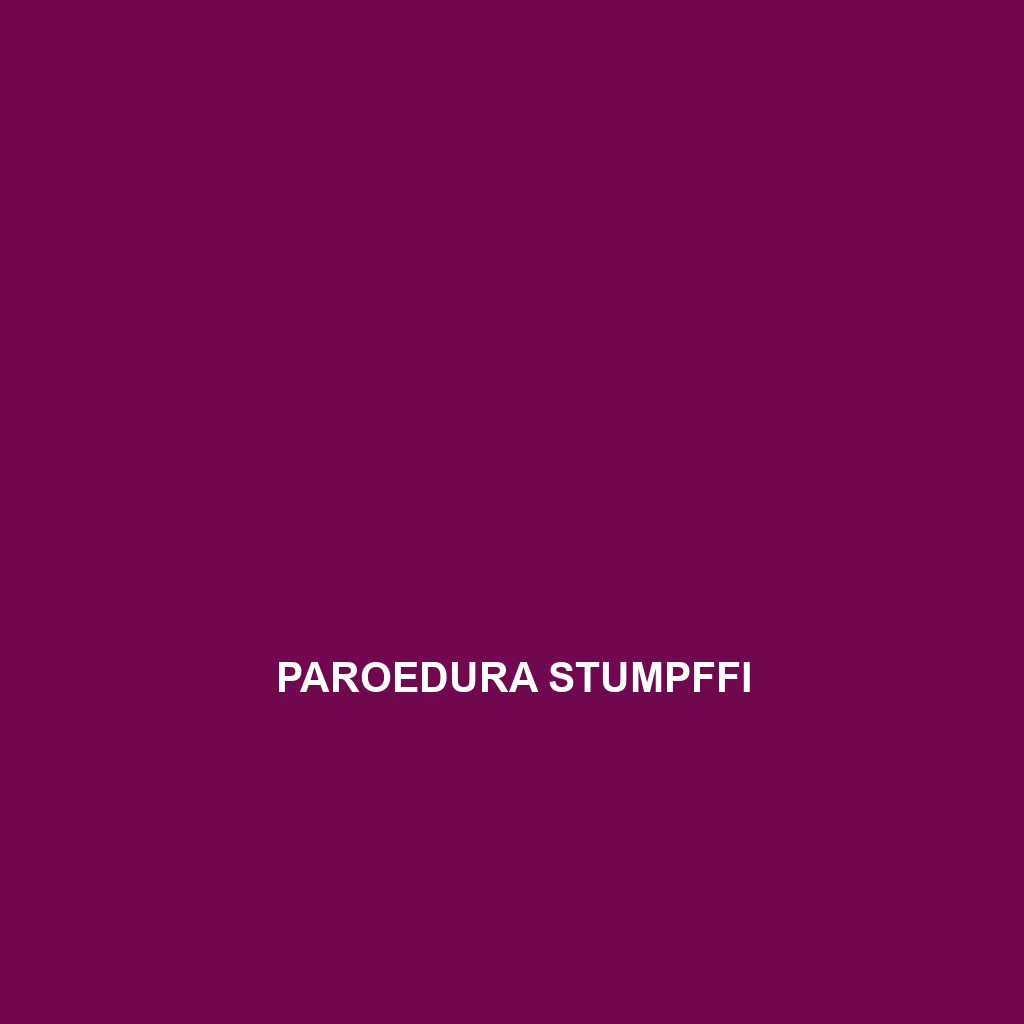Common Name
Paroedura stumpffi
Scientific Name
Paroedura stumpffi
Habitat
Paroedura stumpffi, commonly known as Stumpff’s Madagascar Ground Gecko, is primarily found in the tropical and subtropical rainforests of Madagascar. These geckos inhabit regions characterized by dense vegetation, moist microclimates, and a rich biodiversity. The species thrives in humid environments where daytime temperatures range from 25°C to 30°C (77°F to 86°F). In addition to rainforests, they may also venture into surrounding areas such as savannas and disturbed forests, highlighting their adaptability. The choice of habitat plays a crucial role in their survival, providing both food sources and cover from predators.
Physical Characteristics
Paroedura stumpffi exhibits a range of physical characteristics that make it a distinctive species among geckos. Typically, adults reach a length of approximately 15 to 20 centimeters (6 to 8 inches). Their bodies are characterized by a robust build with a broad head and large, expressive eyes. The coloration varies widely, ranging from earthy browns to vibrant greens, often adorned with striking patterns that help them blend into their forest surroundings. One unique feature of this species is its ability to change color slightly based on environmental stimuli, a result of specialized pigment cells known as chromatophores. This adaptation not only aids in camouflage but also plays a role in social interactions.
Behavior
The behavior of Paroedura stumpffi is fascinating and includes various unique habits. They are primarily nocturnal, emerging at night to feed and socialize, which makes them less susceptible to the daytime predators. During mating season, males are known to exhibit territorial behavior, engaging in elaborate displays to attract females. This includes head-bobbing and a series of specific vocalizations. Social interactions among these geckos can be quite complex, often involving hierarchies and territorial disputes. Their climbing ability allows them to navigate both ground and arboreal environments, showcasing their adaptability to different ecological niches.
Diet
Paroedura stumpffi is an insectivore, predominantly feeding on a variety of small invertebrates. This diet consists mainly of insects such as crickets, beetles, and ants, which they hunt with remarkable speed and agility. Their keen eyesight aids in spotting prey during nocturnal foraging. While they primarily rely on animal matter, some individuals have been observed consuming plant material, indicating a degree of dietary flexibility. This omnivorous behavior can be particularly beneficial during periods when insect populations fluctuate, ensuring access to necessary nutrients.
Reproduction
The reproductive cycle of Paroedura stumpffi is marked by distinct seasonal patterns. Mating typically occurs during the rainy season, which lasts from November to April, correlating with a peak in food availability. Females lay clutches of 2 to 5 eggs per breeding cycle, which they bury in moist substrate to protect them from predators. The incubation period ranges from 40 to 60 days, depending on environmental conditions. Parental care is limited; however, the eggs benefit from being placed in habitats rich in organic matter, which helps maintain optimal moisture levels for successful hatching. The hatchlings are independent from birth, resembling miniature adults.
Conservation Status
The conservation status of Paroedura stumpffi is currently listed as ‘Least Concern’ according to the International Union for Conservation of Nature (IUCN). However, the species faces several challenges, including habitat loss due to deforestation and the expansion of agriculture in Madagascar. Preservation of their natural habitats is vital, and various conservation efforts are underway to protect Madagascar’s unique biodiversity. Organizations are implementing sustainable practices and advocating for the establishment of protected areas to ensure the survival of this and other endemic species.
Interesting Facts
One of the most intriguing aspects of Paroedura stumpffi is its social structure, which has been the subject of ecological studies. Researchers have noted that these geckos often engage in cooperative behaviors during foraging, with individuals working together to uncover hidden prey. Additionally, their ability to adapt both physically and behaviorally to changing environmental conditions highlights their resilience. They are also known for their impressive climbing skills, often seen basking on tree branches or under leaves, showcasing their versatility in habitat utilization.
Role in Ecosystem
Paroedura stumpffi plays a significant role in its ecosystem as both a predator and prey. As insectivores, they help control insect populations, contributing to the balance within their environment. This gecko’s presence also serves as an important food source for larger predators, including snakes and birds of prey. By participating in these food webs, they maintain ecological stability and demonstrate their role as a key species in Madagascar’s rich biodiversity. Additionally, their activities may aid in seed dispersal, promoting plant growth and contributing to forest regeneration processes.
